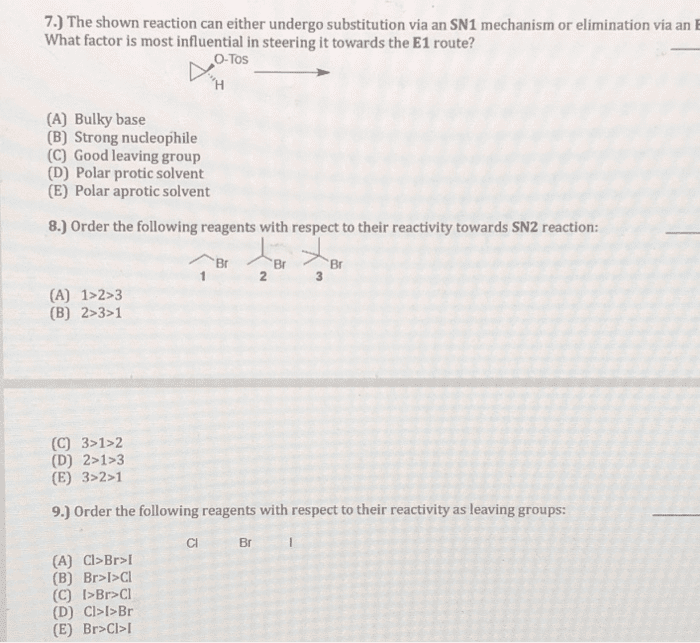CHEM 2OA3 Study Guide - Sn2 Reaction, Amide, Elimination Reaction
Document Summary
Sn2 if either of the reactants is charged. Aprotic favors e2 if either of the reactants is charged. Nu: strength, but but low [nu:] weak nu: disfavors sn2 disfavors a sn2 reaction if the reactant is not charged. Not affected but low [nu:] disfavors a e2 reaction. Protic favors e1 if the reactant is not charged. *for a tertiary substrate, the transition state exhibits a partial double bond that is more highly substituted therefore the transition state will be lower in energy. For an e1/sn1 mechanism the stability of the substrate and of the leaving group plays the major role in determining whether or not a reaction will occur. The nu: does play a role to a lesser extent. The stability of the substrate can be determined with a concept similar to ario, as the leaving group plays a big role in determining whether or not e1/sn1 reactions occur.



